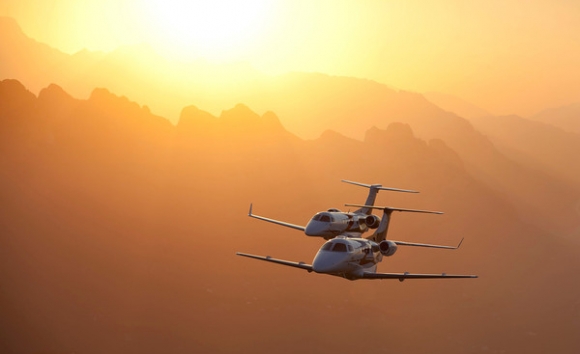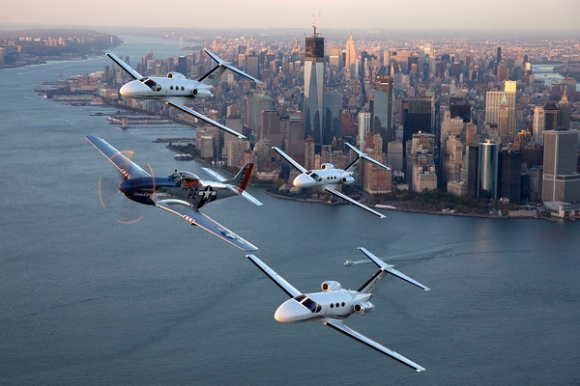Behind the scenes with incredible aerial photographer Jessica Ambats (VIDEO) (update: with more pictures!)
posted Thursday, January 30, 2014 at 11:55 AM EST
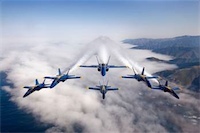
SmugMug has continued its interesting series of interviews with prominent photographers, this time profiling the mind-blowing work of aerial photographer Jessica Ambats. Ambats specializes in air-to-air photography, shooting planes while in one herself. A trained pilot, she has managed to combine a love of photography with flying into some absolutely astonishing images. And in this interview, she talks about the realities of trying to organize these incredible displays of precision work, all across the country.
The folks at SmugMug were kind enough to provide us with the entire interview, which is an insightful look into a world of photography that few of us will be lucky enough to ever attempt. There are a million things that you don't even imagine having to think about that would definitely be problematic in this sort of photography. Like trying to arrange the pilots with enough time to get airborne and still get the light you want, or having to do loops around and around landmarks to get the shot. Even something as simple as changing lenses gets an additional layer of difficulty while shooting out the side of an airplane. You can see many more of Ambats' vertiginous photos on her site.
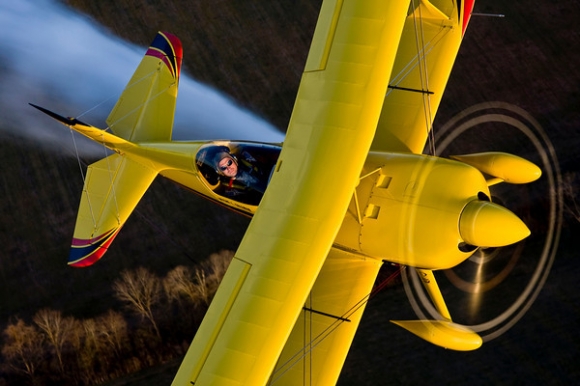
Starting with air-to-air photography seems like a big leap to take.
I’ve always been fascinated by photography for as long as I can remember, but I never had any formal training. My first official introduction to aviation photography was through the International Society for Aviation Photography. They have a meeting every year, and I was able to attend one. I’d always been interested in photography and aviation, but it hadn’t really occurred to me to put the two together. Listening to speakers at the meeting was an eye-opener for me. I then worked at Pilot Getaways magazine, where I got to join their shoots and learn the ropes that way. I’ve also been fortunate to have a great mentor, photographer Russell Munson, who has encouraged me every step of the way.
Has your process changed much since then?
Over the years I’ve refined how I do things. I’ve learned how to be more directive, because you need to constantly give the pilots positioning instructions. And I’ve gotten a lot pickier about everything: the timing of the shoot, the background, and so on. Whereas in the very beginning, I was just excited to go up in an airplane and take pictures, and I didn’t focus on the small—but important—details.
Has your own training as a pilot helped improve your ability to direct in-flight composition?
Being a pilot and taking a formation-flying course helps because it gives me a firsthand understanding of the flight dynamics. This is useful when positioning my subject planes. Also, when planning the shoot, it gives greater understanding of the logistics, such as airspace restrictions, appropriate altitudes, and ATC [air-traffic control] coordination.
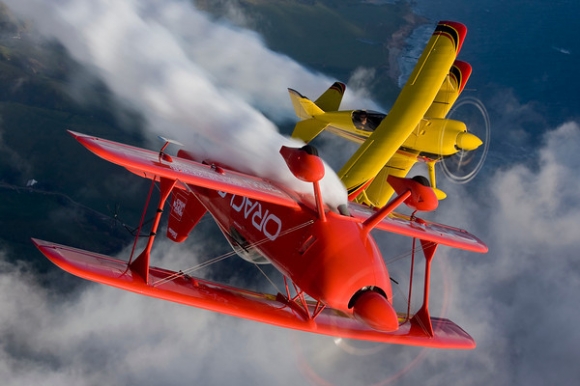
How do you position the subject planes?
I talk to them directly over the radio, or I relay my instructions through my pilot via the intercom. My positioning instructions are measured in feet, such as “ten feet higher” or “twenty feet back.” Sometimes I’ll also use hand signals, but in general I prefer to keep my hands steady on the camera.
You’re telling pilots to fly ten feet one way or another, which is probably very tough to do.
A movement of ten feet exactly is really hard to judge. So what I’ll do is give the first command: ten feet higher. And then I’ll watch what they do. Whatever they do, I make a mental note of what they are using as ten feet. Then I calibrate based on that.
The pilots I work with are highly experienced in formation flying, so they’re used to small adjustments. They can focus on a particular part of the photoship (the plane I shoot from) and then move their line of sight relative to that.
Air-to-air photography is a team effort and the pilots make all the difference in a safe and successful shoot.
How close do the planes fly?
Distances range from around 20 to 150 feet. I’ll move the subject planes farther out or closer in depending on the composition I’m trying to create.
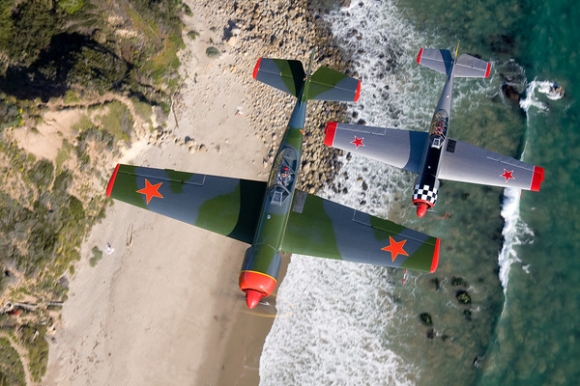
You’ve got all this coordination between pilots, planes, and air-traffic control. Do you also have to coordinate with the Federal Aviation Administration?
No. And depending on the airspace, we may not even need to talk to ATC. There’s no special clearance required for a photo flight. You fly within the same regulations as a standard flight.
In congested areas with controlled airspace, like Las Vegas, we coordinate in advance with ATC. We’ll also give a head’s up to local helicopter companies as well as law enforcement. They’ve gotten calls saying, “Hey, two planes are chasing each other over the Strip.” We want to do as much advance coordination as possible before shooting in a high-visibility area.
Could you walk us through your typical shoot process?
I’ll first pick a location. For the SmugMug shoot in the SmugMug Film video, it was the Bay Area. Then, I’ll plan a flight route. In the Bay Area, you can make a nice loop over Alcatraz Island, the San Francisco skyline, and the Golden Gate Bridge.
Next is the hardest part of everything: scheduling a date that works for everyone. Coordinating multiple pilots, airplanes, and the weather is not easy!
Once a date is set, I’ll calculate the exact timing for everything. I’ll look up sunset times and work backward from there: What time do we want to be over the bridge? What time do we need to depart our airport to be there? What time do we need to arrive at the airport to brief and set up cameras?
As the shoot gets closer, I’ll start checking the weather forecast constantly. The day prior to the morning of, we’ll make a final go/no-go decision. If the weather looks iffy or bad, we’ll postpone it. If it looks good, that’s a go, and we’ll all meet for a pilot brief.
During the brief, we’ll cover the specifics of the flight, including takeoff/landing procedures, frequencies, altitudes, airspeeds, photo maneuvers, and emergency procedures. I’ll discuss the shots I’d like to get and review my positioning terminology.
On the ramp, we’ll configure the photoship. My pilot will remove the doors, and I’ll set up my gear. I’ll put my harness on, and we’ll launch.
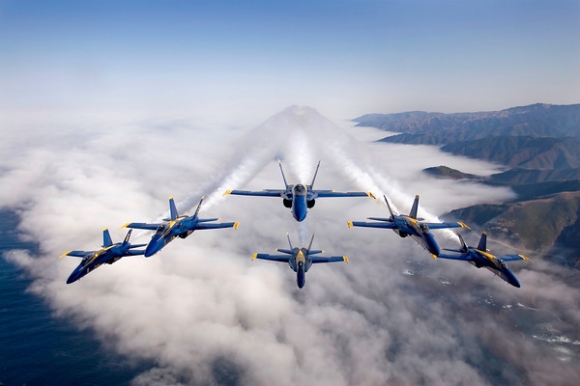
In the footage you had a spare camera in your lap. You don’t try to change lenses once you’re up in the air, right?
No, that would be a bad idea. You don’t want anything loose. I would not want to drop a lens for sure! And there’s so much airflow that it can’t be good for the camera sensor. I’ll take two cameras, with two different lenses.
On photo flights, do you use any cameras besides your Canon DSLRs?
In addition to my beloved GoPros (which I mount in various spots on each airplane), I’ve been wearing Google Glass while on photo flights. I record video and take photos with Glass, but I would like to find a way to do live hangouts during photo flights so others can join in on the experience!
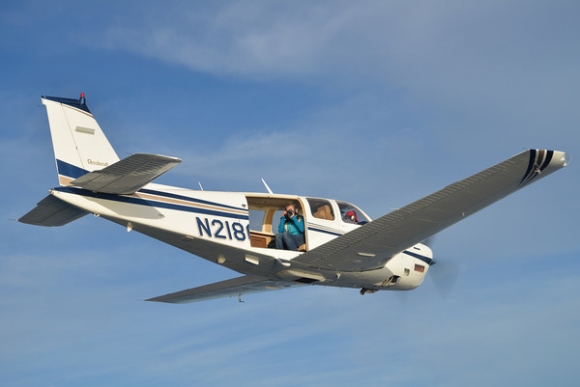
Do you have any tips or tricks for how you maintain your focus in such a chaotic, loud environment?
My mental focus, or the camera focus?
Both!
Mental focus comes instinctively. It’s a very intense environment. Everything happens quickly, so there’s a lot going on. You’re sitting in an open door, which can be pretty uncomfortable, cold, noisy, and bumpy.
For example, I did a shoot over the Hollywood sign with three jets that was very challenging. We flew orbits in front of the sign, and I only had a small amount of time during each orbit to get the shot. In that time I had to position three airplanes relative to each other, and then line them up with the sign, too. I have to be entirely focused on what I’m doing during the flight or I will miss the shot.
With the camera itself, I try to be really, really steady holding it. I stay out of the airstream and focus on the subject. I also use image-stabilized lenses, like Canon’s 24-105 and 70-200.
The flights are pretty intense. I’m usually completely exhausted afterward. Mentally and physically exhausted.
Are there any flights that are particularly memorable for you?
One that comes to mind was over New York City, where I’m from. It was a complicated shoot of four privately owned Citation jets and a P-51 Mustang warbird from WWII. So we had six airplanes, including the photoship I was in, flying down the Hudson, circling over the Statue of Liberty and other landmarks. As a kid growing up in Manhattan, I always looked up at airplanes as they were flying and never imagined that I’d be in one taking photos.
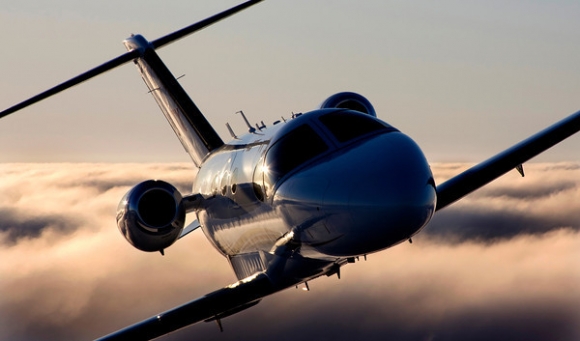
You mentioned that you prefer sunset flights to sunrise. Any reason why?
I’m not a morning person! And sunrise shoots in general are harder on everyone. I want to be shooting over the location at the very first light, so that means getting up way before sunrise to meet, brief, get the airplanes ready, set up my gear, take off, and fly to the location. And then the sun comes up. It can be a little brutal when I have a sunrise photo flight the morning after a sunset shoot.
But the main reason I like sunset better is that, as I usually launch an hour before sunset, the light just keeps getting better and better. You’re working into the good light. Everything gets more tuned. But at sunrise, the very start of the shoot is the best light, and it just gets worse from there. I always feel like I run out of good light really quickly in the mornings.
That said, the air is usually so calm in the mornings, and you have a great feeling that you’ve got the whole sky to yourself. It’s always worth the effort.
Do you have a favorite aircraft to shoot?
I like them all! I do. It was a real treat when I shot the Blue Angels from one of their F-18 fighter jets, but I love shooting everything from a little Piper Cub, which is a two-seat light aircraft, to a larger business jet. They all have different challenges.
For example?
On one of my Blue Angels shoots, I was in their two-seat F-18 for formation aerobatics. Their routines are intense with strong, sustained G-forces. It can be physically hard to hold the camera up while pulling Gs. I learned pretty quickly to position my camera before each maneuver started. It’s also challenging to shoot through a canopy, which may have scratches, reflections, and glare.
Any advice for those who might want to pursue a similar path?
Safety, safety, safety. Make sure you’re with experienced formation pilots; otherwise, don’t do it. It’s not the kind of shooting I would encourage anyone to just wake up one day and go do. Spend time in aviation environments first. A good place to start is at an airshow where you’ll have lots of great ground-to-air photo ops and you’ll meet other aviation photographers.
What do you love most about what you do?
I love to be in the air! There’s a great saying: “To most people, the sky is the limit. To those that love aviation, the sky is home.”
